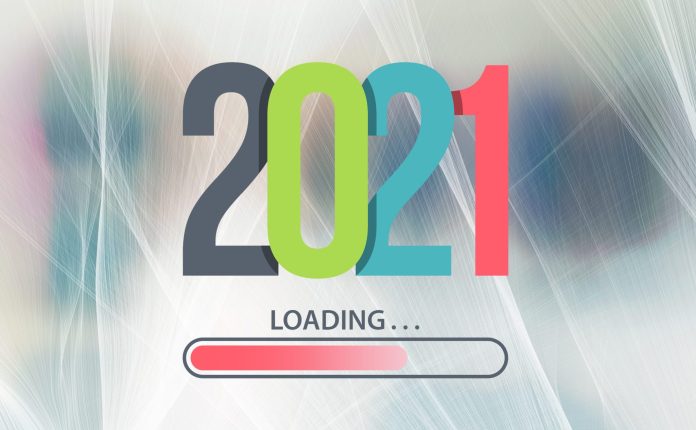As the curtain falls on 2020 and businesses take stock of a year defined by Covid-19, it is safe to say that IoT, one of the few big winners over the past year, is poised for even greater success in 2021. In fact, the number of IoT devices is expected to grow to 30.7 billion this year, hitting 75.4 billion in 2025.
Covid-19 has certainly highlighted the potential of IoT. Vodafone conducted a study on the impact IoT is having on businesses during the pandemic and found the technology was key to maintaining business continuity. Combined with the ongoing deployment of 5G, 2021 may well be defined by IoT. One of the areas set to be impacted the most by IoT is real-time locating systems (RTLS).
RTLS detects the location of a target – anything from a vehicle to a package to a person. The merging of RTLS and IoT has created a new ecosystem with numerous business advantages, including the integration and automation of systems and assets, workflow management, safety enhancements, and the collection of impartial and accurate information. But what does that mean for the IoT industry?
Moving beyond silo solution applications
2021 will see an increasing demand for open, flexible, versatile, and scalable technology solutions. Powered by IoT, they will enable easy integration with existing applications and allow multiple actions simultaneously via a single device. Additionally, pandemic related use cases such as social distancing and contact tracing will rise in importance and we’ll see increased investment in IoT equipment, both from an operational and maintenance perspective.

Consider an IoT-powered smart building for example. It will include actions spanning wayfinding and access control to workspace management and room bookings. More likely than not, there will be many different systems running concurrently that are not able to work together to solve each specific need.
Our prediction is that 2021 will see the start of system integrators and end-customers becoming increasingly vocal about being locked into one vendor’s vertical offerings and not having the option to select better and/or more attractively priced IoT-powered products and services. The result will be a preference for open and modular technology platforms that allow them to tailor their offerings according to the end customer requirements.
Demand for flexible and scalable solutions
2021 will see an increasing demand for open, flexible, versatile, and scalable technology solutions. Powered by IoT, they will allow easy integration with existing applications and enable multiple use cases to be addressed at once via a single device.
Over the past few years, numerous pilots and trials for RTLS technologies have been set up across different industries, such as workflow analysis, resource optimisation, security and safety, infotainment and enhancing user-experiences. As IoT continues to gain momentum next year, we expect to see landmark numbers of companies announcing their plans for the future and revealing how they intend to retain their positions as market leaders via the adoption of the latest RTLS technologies.
Use cases can be found in many industries, including in: workflow optimisation, asset tracking, and worker safety applications for industrial environments; hand-hygiene compliance in hospitals; ‘wander management’ in elderly care homes, in line with US regulation; locating workers and assets in mines and tunnels, in line with EU regulation; worker safety in heavy industry and oil and gas environments; government initiatives to ensure citizen safety in public buildings and educational buildings; and staff and inmate safety in correction centres.
As these projects start to incorporate IoT as part of their digital transformations, they will also need to robustly scale throughout all stages of the project. This will lead to RTLS and IPS platforms increasingly leveraging cloud architectures. In order to be successful, they will need to be able to provide plug & play operations, easy commissioning and seamless integration while keeping roll-out and maintenance costs predictable and well under control.
Carriers to combine 5G-powered IoT and RTLS for Industry 4.0
The industry has started to embrace the vision of space digitalisation. With the advancements of digital twins and Industry 4.0, as well as IoT, there will be an increasing demand for fast and reliable data networks. This is particularly true for uplink data connectivity, which is one of the key enablers for all cloud based IoT services. The new private LTE and 5G networks will play an important role in the digital transformation of enterprises globally.
RTLS technologies are a natural complement of the 5G networks because they are the foundation of production and operation management. They enable us to know where objects (e.g., assets, tools, machines, goods) are and how they move with respect to the environment.
In the coming year, we will see an increasing demand from industry leaders to have integrated solutions that are able to leverage the benefits of both IoT and RTLS. In short, the 5G communication technologies will be paired with RTLS platforms, leveraging different levels of integration such as on the switch fabric or wireless connectivity layer. Examples of such industries include smart ports, smart parking, airports, transport hubs and smart city initiatives where the accurate position of an object is essential for the service offered.
As the year comes to a close, digitalisation will continue. It’s an exciting time for many industries, and we look forward to seeing what 2021 has in store for this type of technology.

